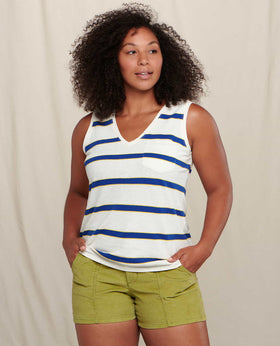
A Denim Primer: Jean Materials Explained
A Denim Primer: Jean Materials Explained
Cotton. Raw. Stretch. Selvedge.
These are just a few of the terms you’re likely to run into when shopping for your next pair of premium jeans, and it can probably feel a little overwhelming — especially if you’re making an investment in your soulmate dungarees and you want to be totally confident in their compatibility with your unique and myriad needs. Your lifestyle could dictate what type of fabric blend might work best for you — plus, knowing what you’re buying can help you extend the lifetime of your jeans in terms of care and maintenance, since different materials might have varying levels of tolerance for ironing, washing, machine drying, etc.
Fun fact:
The word “denim” comes from the french term “serge de Nîmes,” which translates to “serge from Nîmes”, a city in southern France (with serge referring to a type of twill fabric, presumably a predecessor to our modern denim.) Now we call them jeans, based upon the French pronunciation of the Italian city Genoa (“Gênes”).

The Materials.
Once upon a time I thought jeans were all blue, and that they were simply made out of denim (whatever that is!) Nothing more to it, right?
Silly me.
Now I come to find that I had strongly underestimated the intentional craftsmanship and specially-curated fabric blends woven and reinforced in order to cumulate with the stylish, durable pants that we all know and love today (and they’re not all blue!)
Cotton.
Traditional denim is made up of 100% cotton (that’s a plant, mind you — you might be surprised by how many people don’t know that). Many pairs of jeans that you find on the shelf today are still categorized as such, though industry standards have changed drastically over the years and many brands utilize synthetic blends due to industrial advancements in clothing manufacturing. 100% cotton denim jeans are known to be thick, hardy and durable with long lifespans, though they could stretch a bit over time.
Raw Denim.
Many manufacturers send their garments through a pre-wash processing cycle in order to reduce shrinkage, fortify the dye and soften up the material. Raw denim jeans have not gone through this process. You’ve probably heard all manners of odd rituals related to the glory that is raw denim, from freezing it to bathing in it to never, ever washing it (find this gross? You may want to start with some Denim Care 101!)
So, why on earth should you buy raw denim? In the words of Zan Romanoff, “These are jeans that wear in, not out.” Though it might feel like a commitment to break these babies in and surpass their stiff-legged stage, the result is a pair of totally unique-to-you pantalones that are perfectly creased to hug the contours of your body with au naturale fades (as opposed to the faux fades on many mass-produced pairs of pants which ultimately decrease the lifespan of your indigo blues.) You can also expect superior durability when you invest in raw denim.
Selvedge Denim
Selvedge denim refers to denim processed on shuttle looms, in which the edges of the fabric come “finished” and tightly woven to prevent fraying. Most jeans these days are created using denim processed on projectile looms — these can produce much larger swathes of denim (and faster) but the edges come “unfinished,” meaning they’re more prone to unraveling over time.
On one hand, projectile looms have helped make jeans more affordable and accessible to all. On the other hand, selvedge (“self-edge”) denim produced on shuttle looms rings with the nostalgia of the classic blue jeans sporting these small but sturdier details. That’s not to say that you can’t find high-quality non-selvedge jeans, but some denim traditionalists are going back to their fashion roots and seeking out the products of shuttle looms (today, Japan is actually the biggest producer of selvedge denim using shuttle looms.)
Stretch Denim
Technological advancements in the clothing industry have not only brought about faster and more efficient manufacturing techniques, but also new materials. These days, it’s common practice to include synthetic fibers in cotton blends, and denim is no exception to this. Generally, “stretch jeans” blend a small percentage of elastic synthetic fiber such as Lycra or Spandex with cotton. Dungarees with this added elasticity tend to retain shape more effectively as opposed to stretching out (despite their title!).
Though jeans made with cotton/elastane blends may not last quite as long as 100% cotton pairs, they make up for it with stretchy comfort and versatility in terms of everyday activities.
Now you can buy denim like a pro.
It’s sort of like reading the nutrition labels at the grocery store; to the untrained eye, it looks like a whole lot of hogwash and you know something on there is probably useful and relevant but who really knows? But once you know what you’re looking at, the world starts to slide into place, one piece at a time. Hopefully when you go to check the tags of your next potential blue jeans to-be, you’ll feel empowered to bring home the indigos of your dreams.
Now, go forth and conquer!



Leave a comment